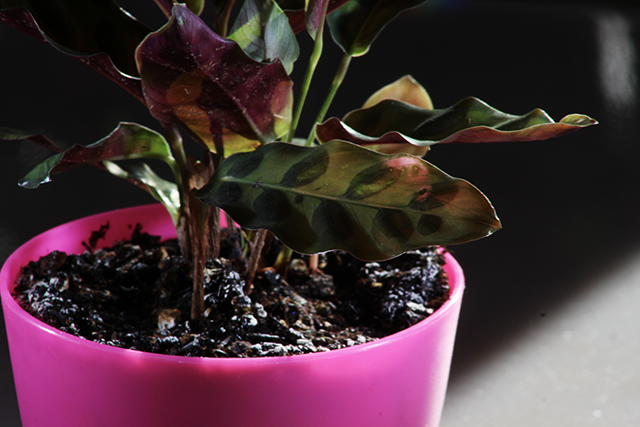Container gardening allows you to create lush greens, colorful blooms, and delicious veggies, all thriving right on your balcony or patio. Your own little oasis of nature amidst the urban jungle.
[wptb id=1279]Container gardening brings the joy of gardening to even the tiniest of spaces, making it accessible for beginners and seasoned gardeners alike.
Let’s unravel the secrets of container gardening, from selecting the perfect pots to nurturing your plants like a pro.
Understanding Container Gardening
Container gardening involves growing plants in containers rather than in the ground, making it ideal for urban settings or limited spaces. It’s flexible and portable, allowing you to create a garden wherever you have sunlight. It’s a whole philosophy of making the most out of limited space and resources.
Plus, container gardening is incredibly flexible. Whether you’re dreaming of a lush herb garden, a riot of colorful flowers, or even a mini orchard of fruit trees, containers make it all possible. And you don’t need a green thumb the size of a giant’s to succeed. With a little know-how and a lot of love, anyone can become a container gardening maestro.
Essential Tools and Containers
You won’t need an elaborate gardening shed or an abundance of equipment. You don’t need much to start container gardening. Essential tools include a trowel for digging, a watering can or hose for hydration, and pruning shears for trimming are indispensable. And, of course, don’t overlook the importance of gloves to keep your hands clean and shielded from thorns or rough surfaces. Many items you need might already be at home.
Selecting Your Container Gardening Supplies
First and foremost, let’s consider containers—the new abodes for your plants. From pots and hanging baskets to grow bags and repurposed items like old buckets or wooden crates, there’s a diverse array of options to choose from. Each container type offers its own aesthetic appeal and functionality, so opt for what aligns best with your style and available space.
Choosing the Right Containers
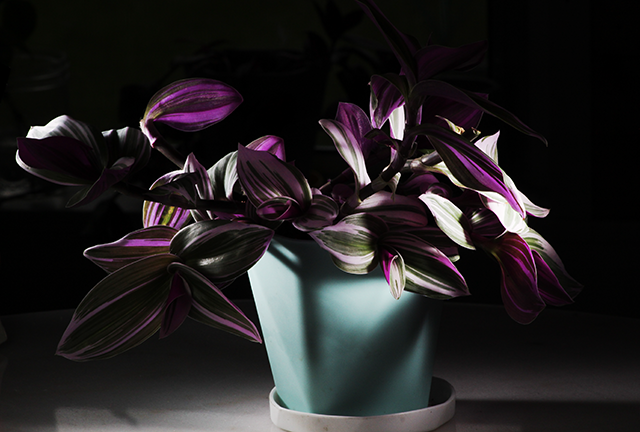
When it comes to selecting containers for your plants, there’s more to it than just aesthetics. Consider these key factors.
Types of Containers
Classic Pots
Classic pots are timeless and versatile, available in a wide range of sizes, shapes, and materials. Whether you prefer terracotta for its classic charm, lightweight plastic for its affordability, or decorative ceramic for its aesthetic appeal, pots provide a sturdy and reliable home for your plants. They’re perfect for accommodating a variety of plants, from herbs and flowers to small vegetables, making them a popular choice for both indoor and outdoor gardening.
Hanging Baskets
Hanging baskets add a whimsical touch to your garden while also saving valuable floor space. These suspended containers are ideal for trailing plants like ivy or petunias, adding vertical interest to your garden or balcony. With their decorative appeal and ability to showcase cascading foliage, hanging baskets are perfect for creating vibrant floral displays and enhancing vertical gardening opportunities.
Versatile Grow Bags
Grow bags offer flexibility and convenience, making them an excellent choice for gardeners with limited space or those looking for portable gardening solutions. Made from durable fabric materials, grow bags provide excellent drainage and aeration for healthy root growth. They’re lightweight, easy to move around, and come in various sizes to accommodate different plant types. Whether you’re growing vegetables on your patio or herbs on your windowsill, grow bags offer a practical and space-saving solution for urban and small-space gardening.
Repurposed Items
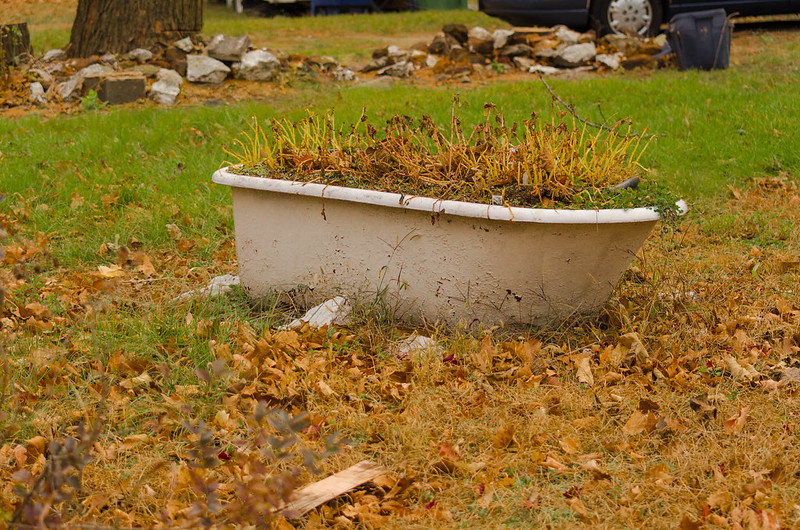
Get creative with repurposed containers like old buckets, crates, or even shoes! These unconventional containers add a unique touch to your garden while also reducing waste and giving new life to old items. While repurposed containers may require some DIY modifications, such as adding drainage holes or waterproofing, they offer endless possibilities for upcycling and personalization. From quirky planters hanging from a fence to rustic herb gardens in vintage crates, repurposed containers add character and charm to any garden space.
Size and Drainage
When determining the size of your containers, it’s essential to consider the specific requirements of your plants. Some plants, such as herbs or smaller vegetables, thrive in compact containers, while others, like trees or large shrubs, require more space for their roots to spread out. Assess the mature size of your plants and choose containers that provide ample room for growth.
Equally important is ensuring proper drainage. Excess water can lead to waterlogging, root rot, and other issues detrimental to plant health. To prevent these problems, opt for containers with sufficient drainage holes at the bottom. These holes allow excess water to escape, promoting aeration and preventing soil compaction. Additionally, consider using a layer of gravel or small rocks at the bottom of the container to further facilitate drainage and prevent water from pooling around the roots.
Best Container Materials for Healthy Plant Growth
The choice of container materials plays a significant role in the overall health and longevity of your plants. Each material option offers unique characteristics that impact factors such as moisture retention, insulation, and durability.
Terracotta
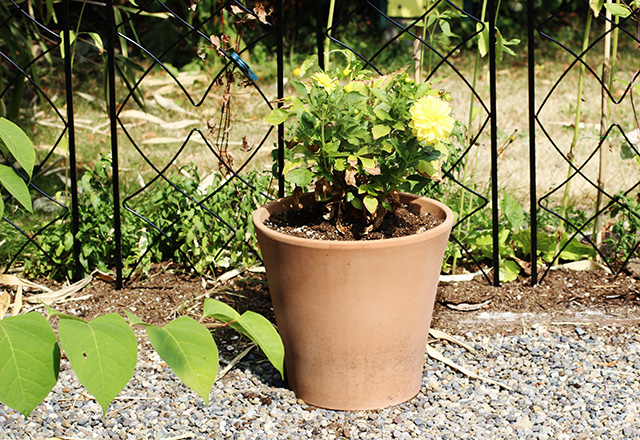
Classic terracotta pots, crafted from natural clay, are known for their porous nature, which allows air and moisture to pass through the walls.
This unique characteristic facilitates excellent airflow around the plant roots, preventing soil from becoming waterlogged and reducing the risk of root rot. However, the same porosity that benefits root health also means that water evaporates more rapidly from the soil.
Consequently, plants in terracotta pots may require more frequent watering, particularly in hot or arid climates where the dry air and warm temperatures accelerate moisture loss. Additionally, the clay material can wick moisture away from the soil, further contributing to the need for vigilant watering practices.
Plastic
Plastic containers are lightweight, affordable, and available in a wide range of sizes and styles. They retain moisture well and are less prone to cracking or breaking compared to terracotta. However, plastic containers may degrade over time when exposed to sunlight, leading to potential brittleness and color fading.
Ceramic
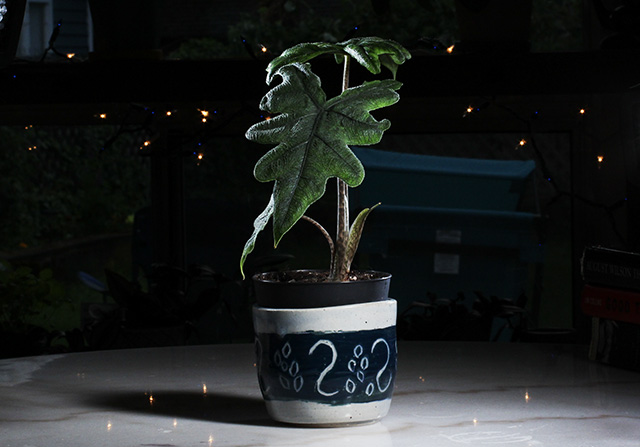
Decorative ceramic pots add elegance and style to any garden space. They come in a variety of colors, textures, and finishes, making them a popular choice for aesthetic appeal.
Above is a picture of our Jaclyn plant that Jessie has placed in one of her mother’s beautiful hand-crafted ceramic containers.
Ceramic containers typically retain moisture better than terracotta but may be heavier and more prone to breakage.
Wood
Wooden containers, such as cedar or redwood planters, offer natural beauty and excellent insulation for plant roots. They are durable and resistant to decay, making them suitable for long-term use. However, wooden containers may require periodic maintenance, such as sealing or staining, to prolong their lifespan and prevent rot.
Consider factors such as climate, plant preferences, and your personal style when selecting container materials. With thought and creativity, you can ensure optimal growing conditions for your plants while enhancing the visual appeal of your garden space.
Aesthetic Appeal for Your Container Garden
While functionality is crucial, don’t underestimate the importance of aesthetics when choosing containers for your garden. Your containers should complement your outdoor space and evoke a sense of joy and beauty every time you see them.
Consider the overall style and theme of your garden, as well as your personal preferences in terms of colors, shapes, and textures. Whether you prefer sleek and modern designs, rustic and natural elements, or vibrant and eclectic styles, there are containers available to suit every taste.
Additionally, think about how your containers will blend with existing landscaping features, such as patio furniture, pathways, or architectural elements. Choose containers that harmonize with the surrounding environment and create a cohesive and visually pleasing garden design.
Choosing and Planting Your Plants
Now that you have your containers sorted, it’s time to choose the stars of your container gardening show: the plants! But before you start picking out your favorites, it’s essential to understand which plants are best suited for container living.
Assessing Light and Space Requirements
Consider the space you’re working with. Are you blessed with ample sunlight, or is shade more abundant? Different plants have different light requirements, so choose accordingly. Sun-loving herbs like basil and rosemary will thrive on a sunny balcony, while leafy greens like lettuce and spinach prefer a bit of shade. Here is a helpful article on growing herbs.
Considering Watering Needs
Next, think about water. Some plants are thirsty creatures, while others prefer to keep their feet dry. Succulents like cacti and jade plants are perfect for forgetful waterers, while moisture-loving ferns and impatiens will appreciate a daily drink. Here is an article on low-maintenance plants.
Factoring in Size and Growth Habit
Size matters too! While you might be dreaming of towering sunflowers and sprawling pumpkins, the reality is that some plants are better suited to container living than others. Look for compact varieties or dwarf cultivars that won’t outgrow their pots too quickly. And remember, you can always upgrade to a larger container as your plants grow.
Adapting to Climate and Seasonality
Consider your climate and the time of year as well. Some plants are more cold-hardy than others, while others thrive in the heat of summer. Choose plants that are suited to your local conditions, and don’t be afraid to experiment with seasonal displays.
Ensuring Proper Spacing
It’s essential to consider spacing. Overcrowding your containers can lead to competition for nutrients and moisture, so give your plants plenty of room to spread out. Check the spacing recommendations for each plant variety and adjust accordingly.
Planting Procedures
When it comes to planting, start by gently removing your plants from their nursery pots, being careful not to disturb the roots too much. Dig a hole in the soil mix that’s roughly the same depth as the root ball, then place the plant in the hole and backfill with soil, gently firming it down around the base of the plant.
Watering and Placement
Once your plants are in the ground, it’s time to give them a good drink. Water thoroughly until the soil is evenly moist but not waterlogged. Then, place your containers in their designated spot, making sure they’re getting the right amount of sunlight and protection from the elements.
Conclusion
Container gardening isn’t just about growing plants; it’s about nurturing a connection to nature, finding joy in the simple act of tending to your garden, and creating beauty and abundance in even the smallest of spaces.
From fresh herbs for your kitchen, to flowers for your balcony, to vegetables for your dinner table, container gardening offers endless opportunities for creativity, experimentation, and growth.

